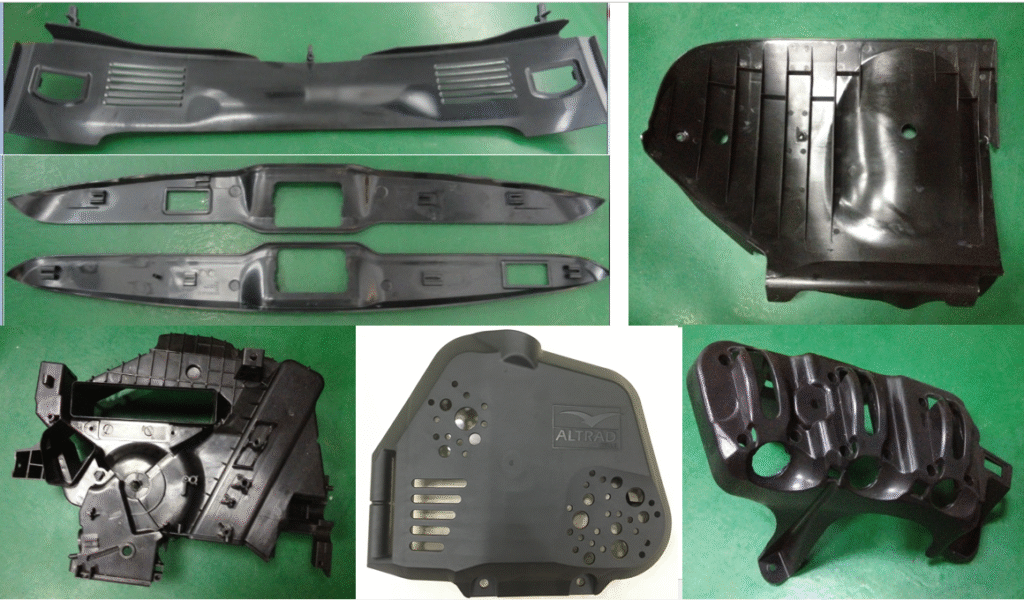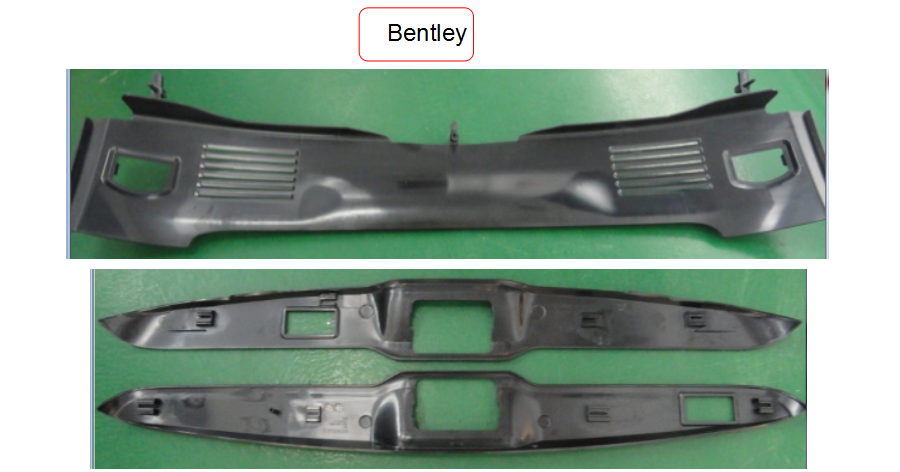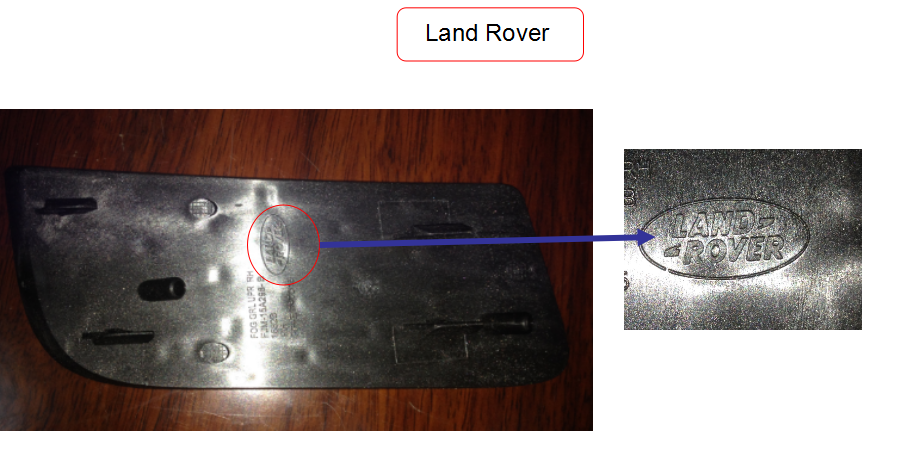Hey there — if you’re here, you’re probably looking to find a reliable injection molding cylindrical parts manufacturer to help you make parts like tubes, sleeves, pipes, cylinders, or other round features. You might have questions like: “Is it harder to mold cylindrical geometry?” or “Will the tolerances hold?” or “Which company can deliver consistently?”
This article answers all that and more. By the end, you’ll understand how LXG Mold Tooling can support your needs — from single prototypes to production volumes — and why cylindrical parts require special attention in injection molding.
Instant pricing & DFM
Guidance from automotive molding experts
Tight tolerances, complex geometries, and multi-material capabilities
Proven expertise with 3,000+ molds delivered worldwide
Why Cylindrical Parts Are Special
Cylindrical parts (think: tubes, bushings, round housings, barrels, test sleeves, pistons, etc.) present unique challenges in injection molding, compared to flat or prismatic shapes. Some key points:
Symmetry and balance: Because they are round, any imbalance in wall thickness, shrinkage, or cooling can lead to warpage, ovality, or dimensional distortion.
Uniform wall thickness: Cylindrical parts often demand very tight wall tolerances to ensure strength and consistent molding.
Long flow length: The molten plastic must travel uniformly around the cylinder. If flow is hindered, you may get voids, weld lines, or incomplete filling.
Demolding challenges: Ejecting a cylindrical shape without damaging its internal bore or surface sometimes requires slides, lifters, or unscrewing mechanisms.
Shrinkage control: Plastics shrink as they cool; in a cylindrical geometry, that shrinkage must be accounted for radially and axially so the part remains round and dimensionally correct.
Because of these factors, making cylindrical parts well requires design expertise, precise tooling, and careful process control. That’s where a specialized manufacturer comes in.
2. What to Look for in an Injection Molding Cylindrical Parts Manufacturer
If you’re going to outsource or partner, here are items you want your manufacturer to excel in:
| Capability | Why It Matters for Cylinders |
|---|---|
| Tooling expertise | They should understand how to design mold tooling that maintains cylindrical geometry under stress. |
| Tight tolerances | You’ll need vendors who can hold radial and axial tolerances reliably (±0.05 mm or better, depending on spec). |
| Balanced flow & gate design | Cylinders require well-balanced runner systems so that melt flow fills all surfaces equally. |
| Cooling system design | Uniform cooling is essential to prevent distortion — cooling channels must be engineered smartly. |
| Demolding strategies | Ability to design slides, lifters, or unscrewing molds where necessary. |
| Material knowledge | Some materials shrink more, some flow worse. A good partner helps you pick the optimal resin. |
| Quality control systems | FAI, CMM, SPC, consistent inspections — you want someone committed to precision. |
| Communication & support | You’ll need regular updates, design feedback, and support through changes. |
When a manufacturer meets all these, you’re much more likely to get a cylinder part that fits, performs, and holds up over time.
3. How LXG Mold Tooling Excels in Cylindrical Injection Molding
Let me walk you through how LXG Mold Tooling handles cylindrical parts and what sets us apart — so if you hire us, you know exactly what you’re getting.
A. Deep Experience & Design Support
When you approach us with a drawing or CAD model of a cylindrical part, our engineers perform design for manufacturability (DFM) reviews. We’ll highlight risks (e.g. wall thickness variations, sink potential, flow length, gate position) and propose modifications if needed — before any mold is made. This reduces surprises later.
B. Precision Toolmaking & Balanced Mold Design
We build molds (cores and cavities) with the utmost precision to keep roundness intact. Our tooling is designed to:
Ensure symmetrical melt filling
Optimize cooling passage design to maintain uniform cooling
Include venting and gate balancing
Use high-grade steel or aluminum depending on volume needs
This meticulous tooling helps prevent deflection, warpage, or internal stresses.
C. Controlled Process & Testing
Once the mold is ready, we run a trial phase. We inject test parts, measure them (CMM, calipers, optical inspection) and validate concentricity, ovality, wall thickness, and true circular form. We also refine processing parameters to get consistent cycles.
D. Material Expertise
Want your cylinder part in ABS, polycarbonate, POM, nylon, or specialty engineering plastic? We’ve done them all. We assist in picking a material that balances flowability (to fill the mold) with final mechanical performance and dimensional stability.
E. Scalability & Reliability
Once the design is approved, we can scale from prototypes (10s–100s) to mass production (10,000s to millions). Our processes ensure that your cylinder parts remain consistent across runs. We offer maintenance, retooling, and lifetime support for your molds.
F. Transparent Communication
We believe in clarity. You get updates at each phase — mold design, progress, testing, tweaks, delivery. We welcome your input before locking final tooling.
4. Typical Cylindrical Parts & Applications
Here are examples of cylindrical parts people often require:
Bushings & bearings sleeves
Cylindrical housings or enclosures (for sensors, filters, optical modules)
Tubes, barrels, nozzles
Caps with inner cylindrical walls
Rotational components (e.g. housings for motor shafts)
Syringe barrels, medical cylinders
Rollers, rollers cores
These parts show up in industries including:
Medical (syringes, catheters)
Automotive (cylinder liners, sleeves)
Consumer goods (containers, dispensers)
Aerospace (instrument housings)
Industrial machines (rollers, sleeves)
5. Step-by-Step Process with LXG for Your Cylinder Orders
Alright, want to see how it goes when you place an order with us? Here’s the journey:
Step 1: Inquiry & Quotation
You send us your part files (CAD, drawings), specifications (diameter, tolerance, material, quantity). We analyze and respond with a quote and any design suggestions.
Step 2: DFM & Design Feedback
Our engineers review your design, propose optimizations (gates, walls, draft). We iterate until both sides are happy.
Step 3: Prototype or Soft Tooling
If you want to test the part, we can build a soft aluminum prototype mold (a rapid injection mold tooling approach) and produce a small batch for validation.
Step 4: Final Mold Build
Once the design is locked, we build the production-grade injection molding tool (steel or hybrid) for your cylinder part. We do machining, polishing, assembly, and pre-checks.
Step 5: Trial Runs & Validation
We run sample shots, inspect parts (CMM, optical), verify dimensions and geometry. We iterate tweaks if needed to guarantee your cylinder is perfect.
Step 6: Production Runs
Now we produce your order volume. We monitor every cycle, perform in-line QC, and maintain the mold.
Step 7: Post-Processing & Finishing
If your cylinder needs any finishing — surface coats, plating, engraving, secondary machining — we do that before packaging.
Step 8: Delivery & Aftercare
We package safely, ship to you, and provide mold maintenance, spare parts, or rework support over the life of the project.
6. Design Tips to Make Your Cylindrical Parts Better
To get the best from your cylinder molds and minimize cost or rejection risks, here are practical recommendations:
Keep wall thickness uniform as much as possible (no sudden transitions).
Add draft angles (at least 1–2°, inside and outside) to help ejection.
Optimize gate location to avoid weld lines and ensure balanced flow.
Use ribs or fillets sparingly and carefully — avoid thick ribs that act like heaters.
Avoid overly deep undercuts unless necessary (they complicate mold design).
Consider tolerances realistically — don’t demand ±0.01mm on large diameters without justification.
Specify surface finish early (if you need mirror, matte, texture) — polishing matters.
Plan cooling channels close to the mold cavity surface to minimize hot spots.
Account for shrinkage — each resin has different shrink rates; match them with your dimensions.
Engage with your manufacturer early — get feedback before final design freeze.
If you give us your CAD and part spec, we’re happy to give you design feedback even before you commit.
7. Material Choices & Their Impact
Choosing the right plastic is key to how your cylinder performs. Here’s how different materials behave:
ABS – good toughness, moderate shrinkage; relatively easy to mold cylinders.
Nylon (PA) – stronger, but more shrinkage and moisture sensitivity, so design carefully.
Polycarbonate (PC) – good rigidity, but needs careful cooling.
POM (Acetal) – great sliding properties, good for bushings or bearing-like parts.
PP (Polypropylene) – low cost, flexible, but might warp more in longer cylinders.
Engineering resins (PEEK, PSU, etc.) – for high temperature or specialty uses — more challenging to mold.
We’ll consult with you to pick a resin that balances moldability and final performance.
8. Quality Assurance & Consistency
We take quality seriously, especially with cylindrical parts where small deviations matter. Here’s how we manage it:
First Article Inspection (FAI): We validate the first parts to ensure they meet your specs.
CMM & Optical Inspection: We measure diameter, roundness, ovality, concentricity.
SPC (Statistical Process Control): Monitor each lot to catch drift.
In-line checks: Sampling multiple parts per batch.
Tool maintenance logs: We maintain the mold and track wear so future runs stay accurate.
Traceability: Every batch gets a lot number so quality history is recorded.
This rigor ensures you never get a cylinder that’s out of tolerance.
9. Cost Factors You Should Know
Since you’re considering ordering, here’s what typically influences cost:
Tooling cost: Making a precise cylindrical mold is more expensive than basic flat parts.
Part complexity: If you have undercuts, threads, or features inside the bore, cost rises.
Tolerance tightness: Stricter tolerances = more effort in toolmaking and QC.
Material choice: Engineering resins cost more and may require slower cycles.
Surface finish: Mirror or high polish finish is costlier.
Production volume: Higher volumes let you amortize tooling cost over many units.
Iterations / design changes: Changes after the mold is built cost more.
We’ll always break these down in your quote so you know where the money goes.
10. Why Order Your Cylindrical Parts from LXG Mold Tooling
Here’s what makes us a reliable choice:
Specialized experience in cylindrical geometries
Skilled engineers who give design feedback early
Precision tooling and mold-building capabilities
Scalable production — from prototypes to mass runs
Strict quality control and consistency
Transparent communication & updates
Aftercare and mold support
If you’re ready to get quotes, send us your cylinder CAD files and specs (material, size, tolerance, quantity). We’ll respond fast, help you improve your design if needed, and give you a clear path to production.
Our Work



Get Instant Price, Projects lead time and DFM Feedback
Our Partners







